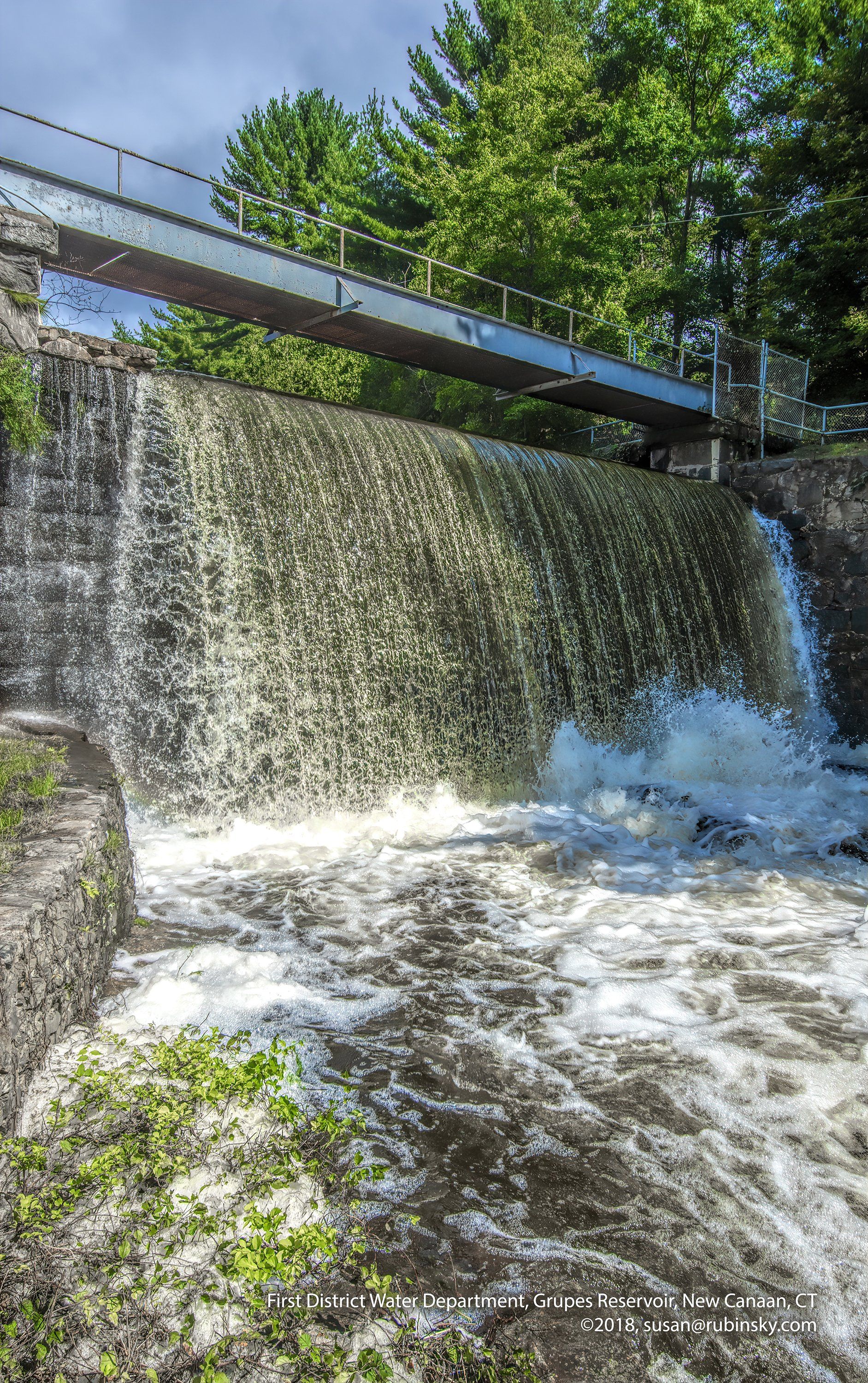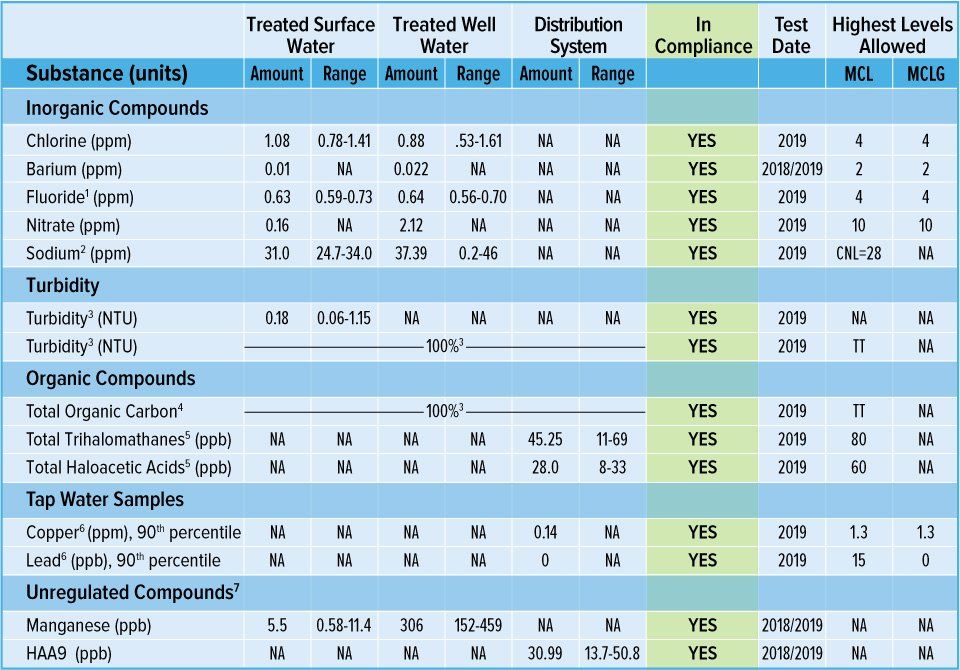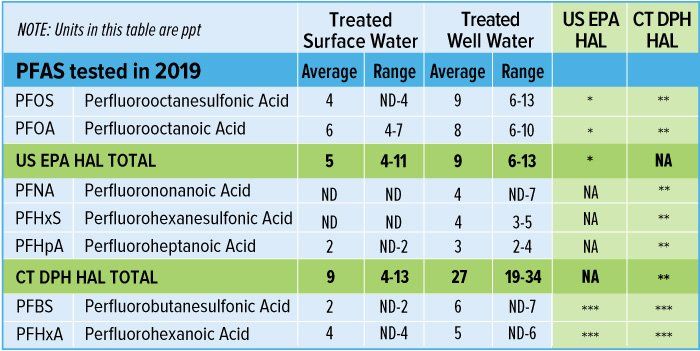2019 Water Quality Report
Letter to Our Customers
Dear Customer:
We are pleased to present you with this year's Water Quality Report. The First Taxing District Water Department has again achieved the goal of meeting the very stringent water quality standards set by federal and state regulatory agencies. This report covers water testing performed throughout 2019.
Our top priority is to provide a safe and reliable supply of drinking water to all of our customers. Each year the water department's laboratory processes thousands of water quality analyses for compliance purposes. This testing includes the source water, the treated water as it leaves the filtration plant and well field, and the water as it travels through the distribution system pipes and into your homes and businesses.
Water quality has continued to be a topic of interest in Norwalk and throughout our region, with important issues like lead, PFAS, and other contaminants in the news this year. Please take this opportunity to read the report and educate yourself on water quality.
You are always welcome to attend our monthly Board of Commissioners meetings in our main office, 12 New Canaan Avenue, Norwalk 06851. The times and dates of meetings are posted on our website at www.firstdistrictwater.org/2020-boc-meetings. Please also feel free to call or write to us and to visit our website at www.firstdistrictwater.org
for additional information.
Sincerely,
Elsa Peterson Obuchowski, ChairmanCommissioners, First Taxing District
2019 Water Sampling
During 2019 the FTDWD staff has taken thousands of water samples in order to determine the presence of biological, inorganic, volatile organic and synthetic organic contaminants. These samples were taken at the reservoirs, the treatment plant, and the well field, and also at representative sample sites around the distribution system. The table below shows only those regulated substances that were detected in the treated water. All of the substances found meet all state and federal standards. The most recent year sampled is noted in the table.
Footnotes
1 - Amount detected; ranges are monthly averages.
2 - There is no federal MCL for sodium but Connecticut has established a notification level of 28 mg/L. If you have been placed on a sodium-restricted diet please inform your physician of the sodium content in our water. For people on a regular diet this level of sodium is very low.
3 - Turbidity is a measure of the clarity of the water. It is monitored because it is a good indicator of the effectiveness of the filtration system. 95% of the samples need to be less than 0.3 NTU. The District met the regulation requirements 100% of the time. Amount is an average of the highest monthly readings.
4 - The District’s water met the required removal rate 100% of the time.
5 - Amount is that of the highest annual average of quarterly measurements in the distribution system and the range are results of the individual sites.
6 - Tap water samples were collected for lead and copper analyses from over 60 homes throughout the service area. The lead and copper results at the 90th percentile did not exceed the AL.
7 - Unregulated Contaminant Monitoring Rule (UCMR) 4 monitoring was done in 2018 and will continue into 2019. There is a list of selected contaminants which do not yet have a drinking water standard set by the EPA. The purpose of the monitoring is to help the EPA decide whether the contaminants should have a standard. We detected two of these contaminants in either our surface or groundwater supplies.
Acronyms and Definitions
AL (Action Level):
The concentration of a contaminant which, if exceeded, triggers treatment or other requirements which a water system must follow.
CNL:
State of CT Customer Notification level.
HAL:
Health Advisory Level is a non-regulatory health-based chemical concentration in drinking water that results in no adverse health risks when a given amount of water is ingested over exposure periods ranging from one day to a lifetime.
MCL (Maximum Contaminant Level):
The highest level of a contaminant that is allowed in drinking water. MCLs are set as close to the MCLGs as feasible using the best available treatment technology.
MCLG (Maximum Contaminant Level Goal):
The level of a contaminant in drinking water below which there is no known or expected risk to health. MCLGs allow for a margin of safety.
NA:
Not Applicable.
ND (Non Detect):
Results below the method detection limit.
NTU (Nephelometric Turbidity Units):
Measurement of the clarity, or turbidity, of water. Turbidity in excess of 5 NTU is just noticeable to the average person.
ppm (parts per million):
One part substance per million parts water (or milligrams per liter).
ppb (parts per billion):
One part substance per billion parts water (or micrograms per liter).
ppt (parts per trillion):
One part substance per trillion parts water (or nanograms per liter).
TOC:
Total Organic Carbon.
TT (Treatment Technique):
A required process intended to reduce the level of a contaminant in drinking water.
Compound Sources
Barium: Erosion of natural deposits
Chlorine:
Water additive used to control microbes
Copper:
Corrosion of household plumbing systems
Fluoride:
Additive for strong teeth; erosion of natural deposits
Lead:
Corrosion of household plumbing systems
Nitrate:
Fertilizer runoff; leaching from septic tanks and sewage; erosion of natural deposits
Sodium:
Water treatment processes; road salt runoff; naturally present in the environment
Turbidity:
Sediment particles; naturally occurring iron and manganese; soil runoff
Per- and Polyfluoroalkyl Substances (PFAS)
Per- and polyfluoroalkyl substances (PFAS) are a group of man-made chemicals that have been manufactured and used in a variety of industries around the globe, including in the United States since the 1940s. PFOA and PFOS have been the most extensively produced and studied of these chemicals. Both chemicals are very persistent in the environment and in the human body – meaning they don’t break down and they can accumulate over time. There is evidence that exposure to PFAS can lead to adverse human health effects. Recently, testing methods have improved allowing these substances to be detected at much lower concentrations. Testing for PFAS compounds in 2018 and 2019 with the more sensitive method found PFAS at levels about half or less of the 70 ppt Drinking Water Health Advisory established by the State of Connecticut Department of Public Health for the sum of five PFAS. The FTDWD has adopted operational measures to minimize the levels in the finished water. We have also started the process to design and build a treatment plant that will be able to remove PFAS from groundwater sources.
In addition to improvement in testing methods, public concern and awareness has also increased, prompting the EPA to develop a PFAS Action Plan in 2019. Additionally, the EPA is working toward creating a MCL for PFAS. Parallel to the EPA, the State of Connecticut published a PFAS Action Plan in November 2019 and will be working towards developing MCLs for PFAS.
During the interim, the FTDWD utilizes the EPA and CT DPH health advisory level of 70 ppt and has been proactively sampling its water for the presence of PFAS. The FTDWD’s treated water has tested well below these levels (see table below), and will continue to be monitored
More information is available at www.epa.gov/pfas/basic-information-pfas
*EPA Health Advisory Level (HAL) is 70ppt combined or greater for PFOS + PFOA
**CT DPH Health Advisory Level (HAL) is 70ppt combined or greater for PFOS + PFOA + PFNA + PFHxA + PFHpA
***Currently, no criteria for HAL has been determined at the state or federal level
Request
More Information
For more information or questions about this report, please contact our Manager of Water Quality at waterquality@firstdistrictwater.org or 203-229-7273.
About Our Water
How FTDWD Water Is Treated
The reservoir water is filtered at our treatment plant in New Canaan. The filtered water is then disinfected with chlorine to protect against any bacteria. We carefully monitor the amount of chlorine, adding the lowest quantity necessary to ensure the safety of your water without compromising the taste. Finally, chemicals are added to adjust the acidity, reduce the corrosivity and coat the pipes. This protects the pipes and keeps leaching of minerals such as lead and iron to a minimum. Fluoride is also added to prevent tooth decay. At the well field, the groundwater is filtered naturally by sand and gravel. The water is then treated in a similar manner as the surface water with the addition of aeration which removes contaminants and raises the pH.

Water Quality & Sustainability
Health Information
From the EPA
This statement is prescribed by the US Environmental Protection Agency for your information.
Sources of lead in drinking water include corrosion of household plumbing system and erosion of natural deposits.
Substances in Water
Substances That Might Be in Drinking Water
To ensure that tap water is safe to drink, the U.S. EPA prescribes regulations limiting the amount of certain contaminants in water provided by public water systems.
Lead
Lead and Drinking Water
If present, elevated levels of lead can cause serious health problems, especially for pregnant women and young children.




